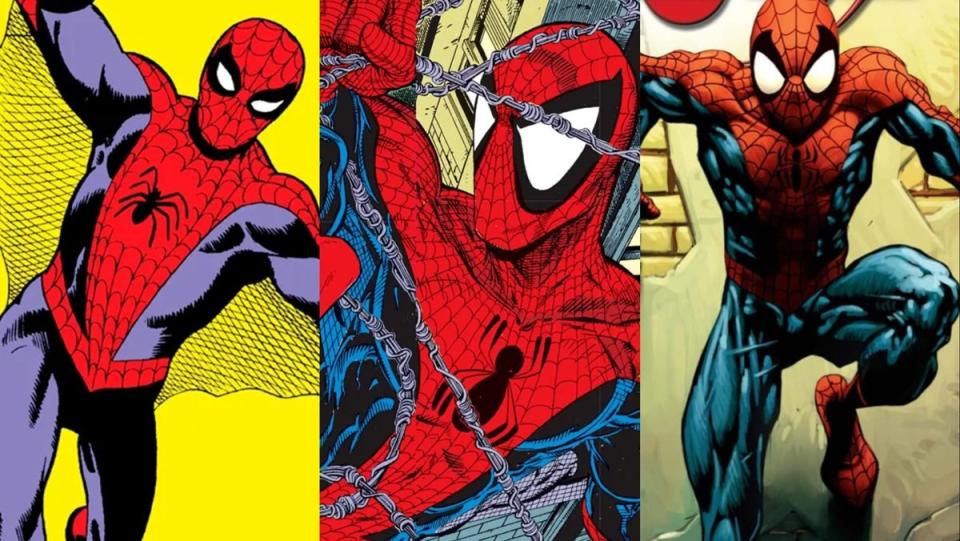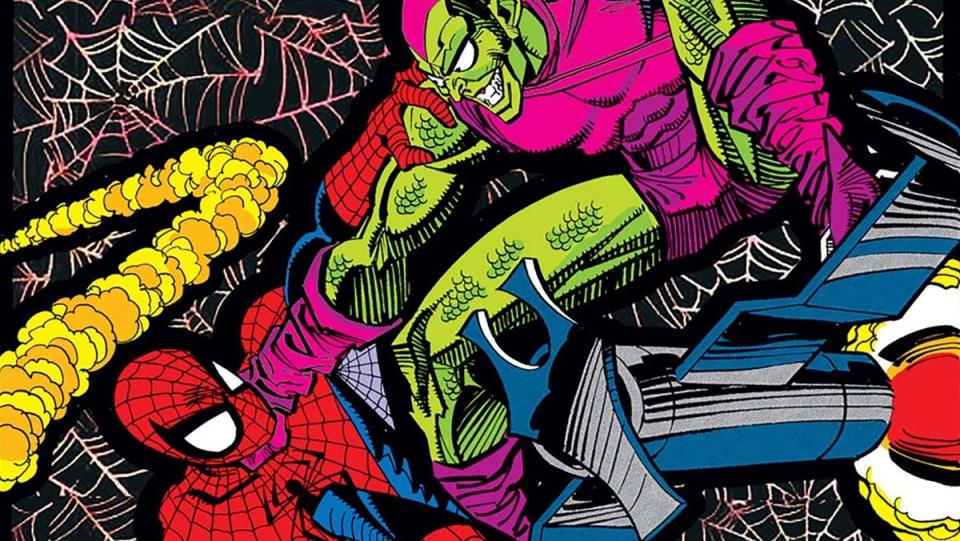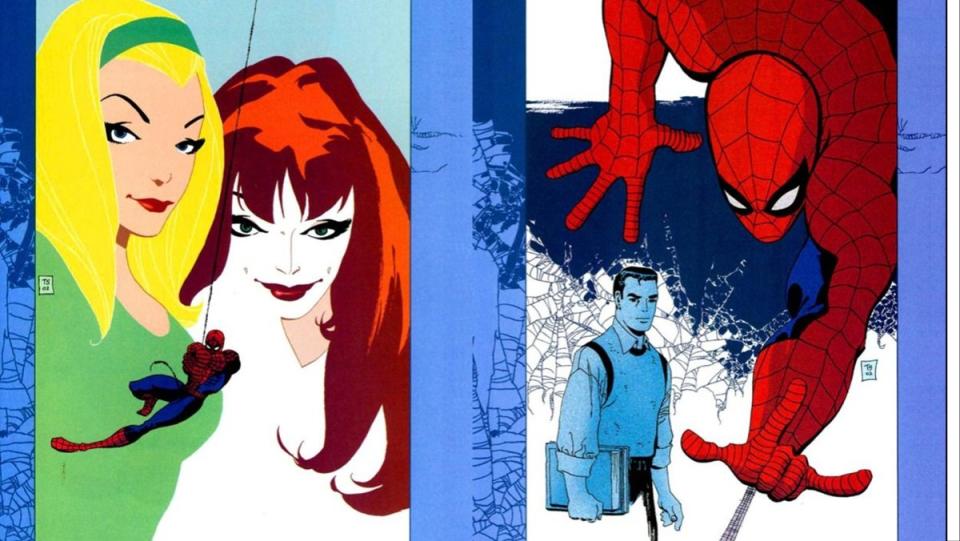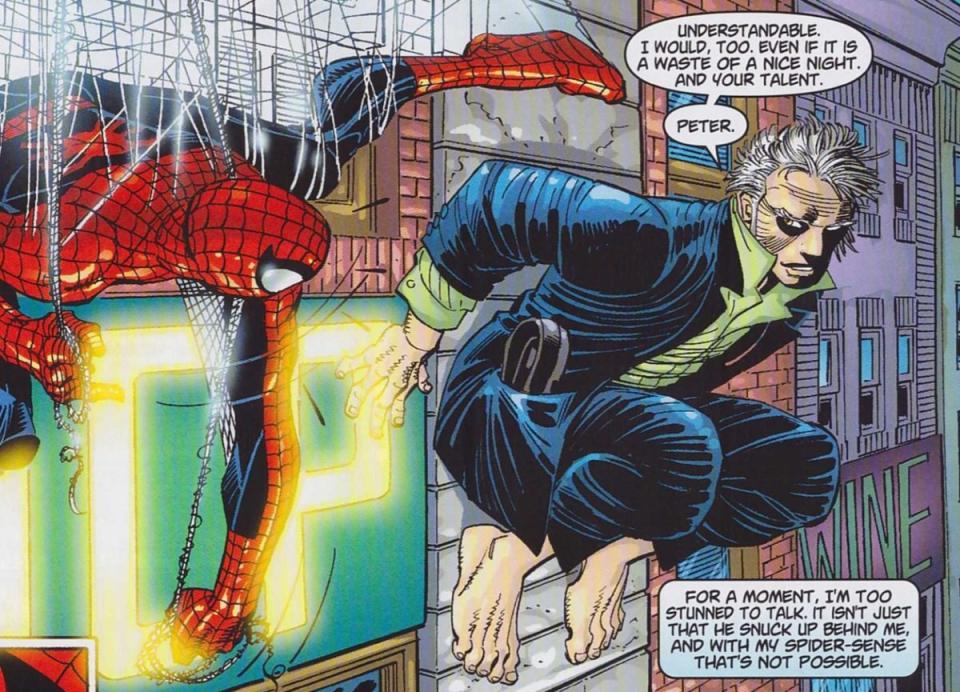The 10 Greatest Spider-Man Comic Book Runs of All Time
- Oops!Something went wrong.Please try again later.
- Oops!Something went wrong.Please try again later.
- Oops!Something went wrong.Please try again later.
For over 60 years, the pages of The Amazing Spider-Man and its various other Marvel spinoffs have been home to some of the best superhero storytelling of all time. From the days of Stan Lee in the ’60s to today’s creators like Dan Slott, here are our picks for the 10 greatest creative team runs of the friendly neighborhood Spider-Man of all time.

10. J.M. DeMatteis with Sal Buscema, Spectacular Spider-Man #178-203 (1991-1993)

Writer J.M. DeMatteis is perhaps most famous for his comedic take on DC’s Justice League, but he also wrote a relatively brief but fantastic run on The Spectacular Spider-Man, from issues #178-200. This was after he wrote the epic Kraven’s Last Hunt storyline in 1987. During his 26-issue run, which lasted from 1991 to 1993, he and artist Sal Buscema told one of the best stories ever involving Harry Osborn and his descent into becoming the Green Goblin, which culminated in issue #200 of Spectacular Spider-Man. It was one of the very few gimmick covers of the ‘90s that actually had a good story behind it. Add in the introduction of the villain Vermin, some X-Men, and this run deserves its status as one of the best.
9. Peter David with Rick Leonardi, Spider-Man 2099 #1-44 (1992-1997)

Peter David has defining runs on several iconic comic book characters, including the Hulk, X-Factor, and for DC, Aquaman. But he also had a pretty defining run for Spider-Man. It’s just the Spider-Man that wasn’t Peter Parker. In 1992, Marvel tasked David with creating a new, futuristic Spider-Man with Spider-Man 2099. This wall-crawler was Miguel O’Hara, the half-Mexican/half-Irish hero who was the first not Peter Parker ongoing character to be called Spider-Man in 30 years.
Together with artist Rick Leonardi, David inverted almost everything about Peter Parker’s Spidey. Miguel was wisecracking out of costume, totally mute as Spider-Man, and so on. His web shooters were organic and not mechanical (something Sam Raimi would later use). The run only lasted 46 issues and four years, but judging from the character’s renewed popularity thanks to Across the Spider-Verse, it’s fair to say David’s run had a long-lasting impact.
8. Todd McFarlane, Spider-Man #1-16, (1990-1991)

Todd McFarlane became an instant superstar in the comics world when he illustrated David Michelinie’s Amazing Spider-Man run in the late ‘80s. His versions of Spidey and Venom became iconic, so much so that Marvel gave him his own Spider-Man title to both draw and write—despite his inexperience as a writer at the time. So in 1990, McFarlane launched Spider-Man #1, which sold an incredible 2.5 million copies. Marvel would break that record a year later with a certain team of mutants.
McFarlane’s writing was a bit over the top, especially by modern standards, but his overall storytelling was undeniably entertaining. It was exactly what the audience craved at the time. His darker take on villains like the Lizard, Kraven, and Hobgoblin redefined the look of those characters. The crossovers with Wolverine and Ghost Rider were very ‘90s, but also very fun. This is one of the shorter runs on this list, but also one of the most iconic. McFarlane’s run only lasted 16 issues as he left Marvel in 1992 to form Image Comics, yet its impact was huge.
7. Dan Slott, with Humberto Ramos and Ryan Stegman, The Superior Spider-Man #1–33 (2013-2014)

Dan Slott has been one of the most prolific Spider-Man writers of the 21st century. But although he’s written plenty of iconic Peter Parker stories, his best Spider-Man run was actually about Otto Octavious, a.k.a Doctor Octopus. In Slott’s Superior Spider-Man series, Peter Parker’s body is taken over by the consciousness of Doc Ock, who takes over Peter’s life and decides he can be a better Spider-Man than his old enemy ever was. Although he does try to do the right thing as Spider-Man, more or less, he’s still arrogant and insufferable. Nevertheless, it was all fun as heck to read. The art by folks like Humberto Ramos, and Ryan Stegman was also always top-notch. Otto was Spidey for less than two years, but it was a memorable two years.
6. Jeph Loeb and Tim Sale, Spider-Man: Blue #1-6, (2002-2003)

In the late ‘90s, the creative team of Jeph Loeb and the late Tim Sale produced one of the greatest Batman stories of all time, The Long Halloween. A few years later, from 2002 to 2003, they re-teamed to tell a story about Peter Parker and his great lost love, Gwen Stacy. In the mini-series Spider-Man: Blue, Peter Parker recounts the events of Amazing Spider-Man #40-48. This modern retelling includes Sale’s incredible renditions of characters like Kraven, the Lizard, the Rhino, and the Green Goblin. And, of course, Gwen Stacy and Mary Jane Watson. Blue is only six issues long, but it still stands as one of the most heartfelt and beautifully written and illustrated Spider-Man stories of all time.
5. Gerry Conway with Gil Kane and John Romita, The Amazing Spider-Man #111-149 (1972-1975)

Following up the legendary run of Stan Lee, which lasted a decade, would have been an unenviable task for any writer. But Gerry Conway took big swings in his Amazing Spider-Man run, which lasted from 1972 to 1975. Conway’s stories were enhanced by some gorgeous art by Gil Kane and Spidey veteran John Romita. It was during Conway’s run that fans met the villainous Jackal and his cloning operation (this would matter a lot 20 years later).
Conway’s MJ became a more fully fleshed-out character. She wasn’t just the “out of his league” supermodel anymore. Oh, and Conway’s run also introduced the world to the Punisher. You may have heard of him. Most importantly though, Gerry Conway bucked all known comic book conventions at the time with one shocking act. He did this by killing off Peter Parker’s longtime girlfriend Gwen Stacy. The repercussions of this are still being felt in the Spider-Man titles today.
4. David Michelinie with Todd McFarlane, Erik Larsen, and Mark Bagley, Amazing Spider-Man 296-352, #359-388 (1987-1994)

In the late ‘80s, Spider-Man was still Marvel’s best-selling solo character, but some excitement had fallen away from Peter Parker. Then, writer David Michelinie took over writing duties in 1987. This was shortly after Peter Parker married MJ, and he focused on the high-stakes soap opera of their lives. During his seven-year run on Amazing Spider-Man (second longest-run after Stan Lee) he worked with some of Spidey’s best-ever artists. Names that became iconic, like Erik Larsen, Mark Bagley, and Todd MacFarlane. And together, they made comics magic. Highlights of his run include the introduction of villains Venom and Carnage. Luckily, he bailed from writing duties right before the infamous Clone Saga, so his run remains untainted.
3. J. Michael Straczynski with John Romita Jr., Mike Deodato, and Ron Garney, Amazing Spider-Man Vol. 1 #500-545, Vol. 2 #30-58 (2001-2006)

At the same time Marvel was injecting new life into teenage Peter Parker in the Ultimate Spider-Man titles, the comics publisher had to figure out what to do with the adult Peter in the 616 universe. They brought in Babylon 5 creator J. Michael Straczynski, who made Peter a school teacher. He teaches at the very same place others bullied him as a kid, Midtown High School. Straczynski wrote adult Peter and MJ better than anyone in years and did so by adding a level of sophistication largely absent in the late ‘90s stories.
He also introduced lasting elements to the mythology like Morlun, a villain who hunts spider-totems across dimensions. That’s a huge influence on the Spider-Verse mythology in the animated films. Sadly, his run also revealed a sordid retcon of Gwen Stacy and Norman Osborn, but nobody’s perfect. The main artists for this run were Mike Deodato and John Romita Jr. The latter’s work on this run made him stand with his father as one of the definitive Spidey artists of all time. Straczynski’s run ended with the much-hated undoing of the Peter Parker and MJ marriage. However, that was an event Marvel editorial forced on him. We don’t hold it against him.
2. Brian Michael Bendis, with Mark Bagley, Stuart Immonen, Sara Pichelli, Chris Samnee, David Marquez, and Pepe Larraz, Ultimate Spider-Man #1-160, Ultimate Comics Spider-Man #1-27 (2000-2011)

During the late ‘90s, Marvel was in trouble creatively and financially. The company emerged out of bankruptcy in the early 2000s, knowing it had to take drastic measures to gain new readers. Marvel conceived the Ultimate line, which involved fresh modern takes on classic characters. Writer Brian Michael Bendis reintroduced Peter Parker and his supporting cast as 21st century teens in Ultimate Spider-Man. And from issue one, the dialogue and characterization were absolutely top-notch. The kids felt real in a way mainstream comics characters hadn’t in a long time.
The reinvented versions of Spidey’s villains often surpassed the originals as well, particularly Norman Osborn. Bendis and artist Mark Bagley did over 100 issues together. Actually surpassing Stan Lee’s run, Bendis continued the title with artists Stuart Immonen, David Lafuente, and Sara Pichelli, with whom he co-created Miles Morales, one of the biggest contributions to come from the Ultimate Spider-Man line. Between Peter Parker and then Miles, this run heavily influenced Spider-Man’s portrayal in other media. This run was an absolute game-changer, surpassed by only one other.
#1. Stan Lee with Steve Ditko, John Romita, John Buscema, and Gil Kane, Amazing Fantasy #15, Amazing Spider-Man #1-100 (1962-1971)

“With great power, comes great responsibility.” This was the only run that could have ever taken the top spot. While Stan Lee co-created almost all the most iconic Marvel Comics heroes, without a doubt his 100-issue run of The Amazing Spider-Man was his best work. With artists like Steve Ditko (Spidey’s co-creator) and later, John Romita, Lee introduced everything that forms the core of what Peter Parker is to this very day. Name a classic Peter Parker personality trait or trope, and chances are it came from Lee.
Lee’s stories introduced 90% of the most iconic Spider-Man villains, like Green Goblin, Doc Ock, Sandman, Mysterio, Kraven, and so many more, not to mention most of the most well-known members of Spidey’s supporting cast. Stan Lee’s run on Amazing Spider-Man lasted a full decade, and it remains the bible from which all following Spider-Man runs on this list pulled from. Simply put, no other Spider-Man run could likely ever take the top spot. Stan Lee and his collaborators broke the mold.

